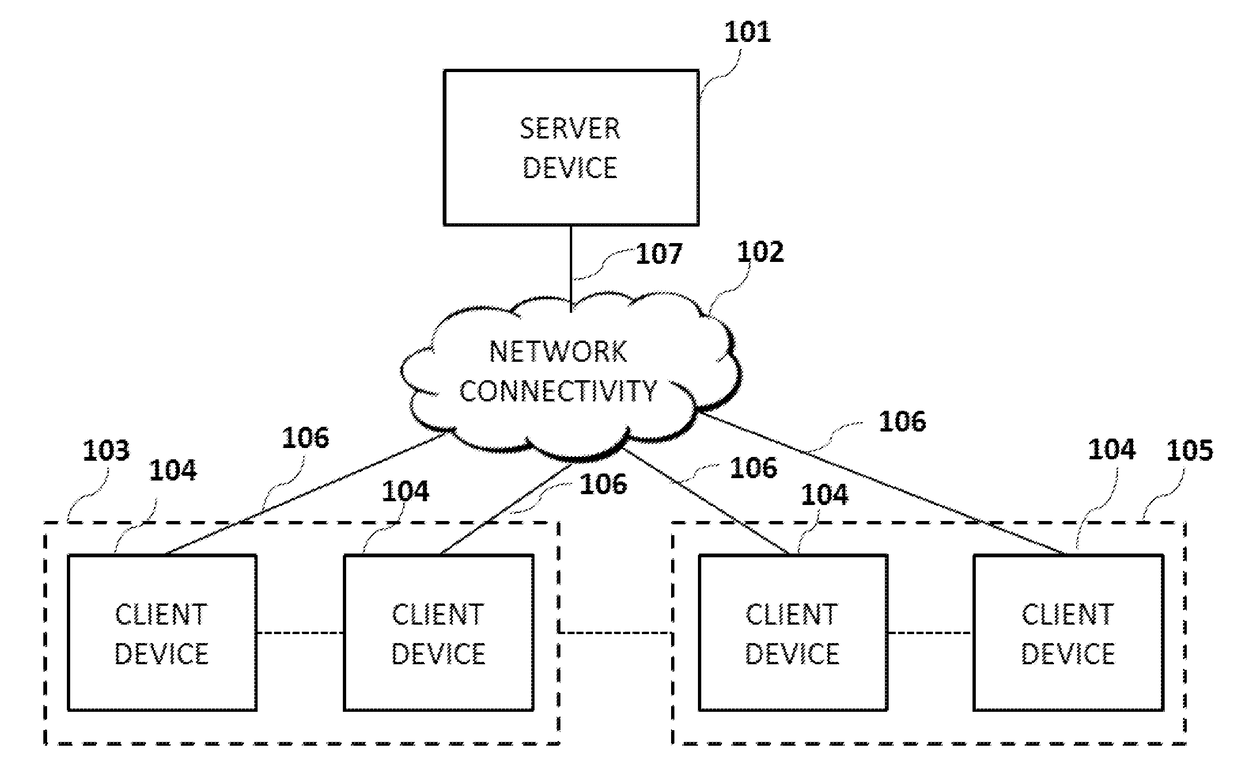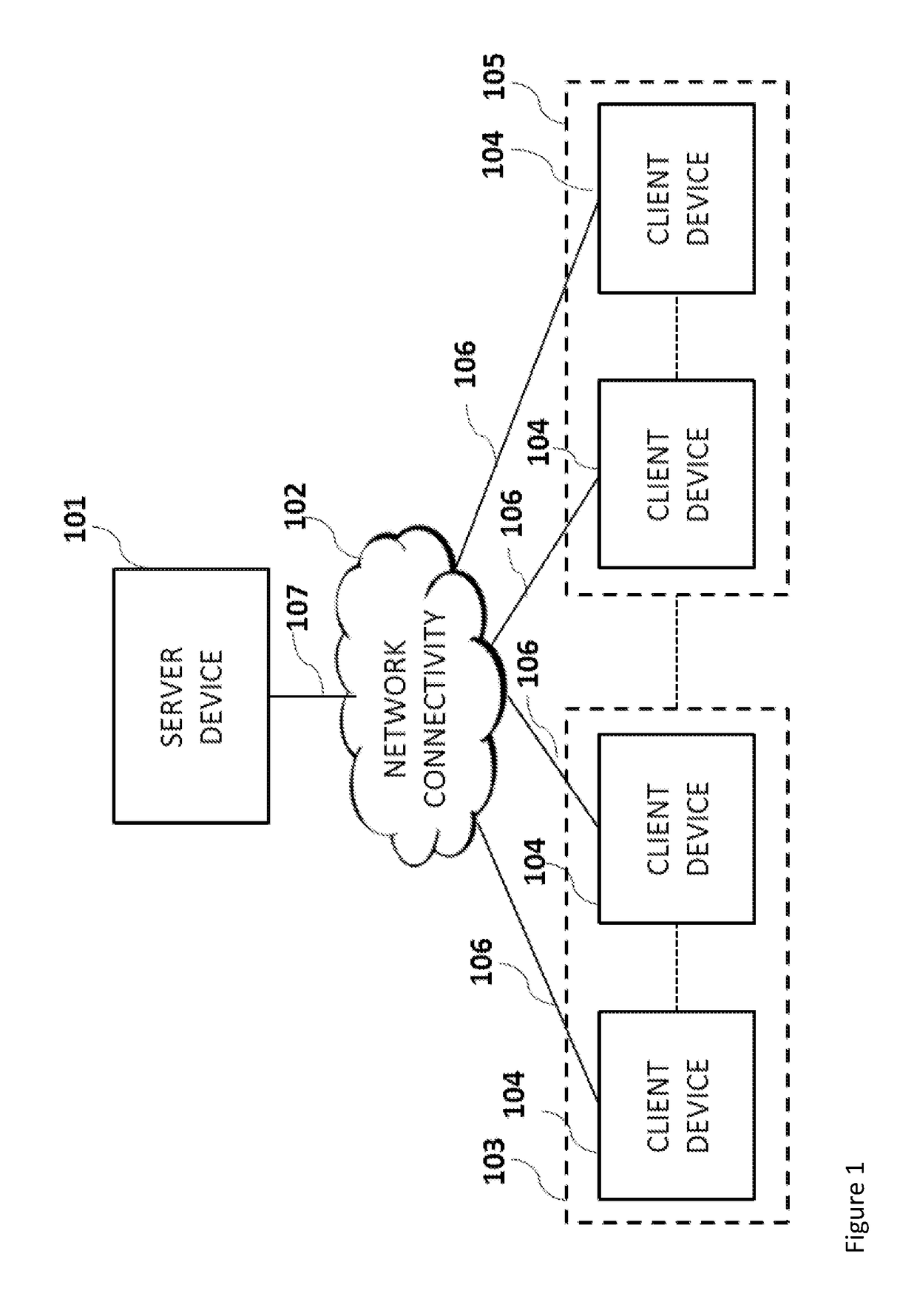Client software attestation
a client software and attestation technology, applied in the field of authenticity checking, can solve the problems of tampered software, untrusted computing environment, and limited resources available to trusted computing environment in terms of computational power, i/o capability and memory, so as to reduce server load, reduce the quality of service provided to legitimate users, and exhaust service resources
- Summary
- Abstract
- Description
- Claims
- Application Information
AI Technical Summary
Benefits of technology
Problems solved by technology
Method used
Image
Examples
Embodiment Construction
[0042]A system and method are described that enable a server device to interrogate the authenticity of software running on a remote client device. In this scenario there is a concern that the software running on the client device may have been tampered with in some manner. Such tampering may be used to launch a software based attack against the server or perhaps to trick the user of software on the client device into performing some unwanted action by manipulating the output of such software running on the client device. Authentication of the user of the client device is not sufficient to prove the authenticity of the actions requested by the client device software if the client software itself has been tampered. Thus it is desirable for the server device to check the authenticity of the client software itself in addition to checking the authenticity of any user of that client device. We term the process of a client device proving the authenticity of its software code as it attestin...
PUM
 Login to View More
Login to View More Abstract
Description
Claims
Application Information
 Login to View More
Login to View More - R&D
- Intellectual Property
- Life Sciences
- Materials
- Tech Scout
- Unparalleled Data Quality
- Higher Quality Content
- 60% Fewer Hallucinations
Browse by: Latest US Patents, China's latest patents, Technical Efficacy Thesaurus, Application Domain, Technology Topic, Popular Technical Reports.
© 2025 PatSnap. All rights reserved.Legal|Privacy policy|Modern Slavery Act Transparency Statement|Sitemap|About US| Contact US: help@patsnap.com



